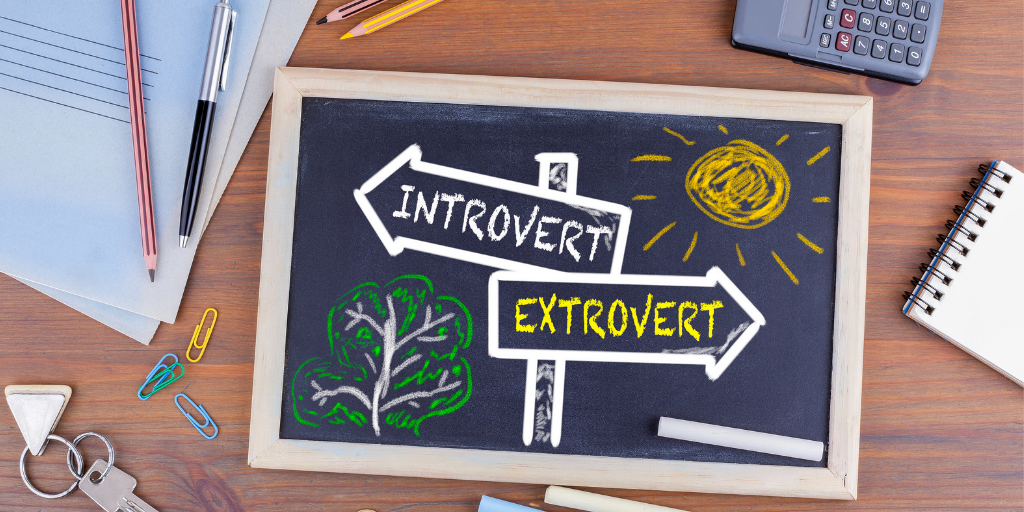
One of the biggest challenges teachers face is creating a classroom environment that serves all of their students. Each child has a unique personality and learning style, so it can be difficult to create a classroom culture that meets the needs of the whole class. This is especially hard when you weigh the differences between introverts and extroverts.
In her book, Quiet: The Power of Introverts in a World that Can’t Stop Talking, Susan Cain describes how the modern classroom is designed in a way that disproportionally benefits extroverts. In other words, the every day function of the classroom is set up, much like the corporate world, in a way that helps extroverts succeed more than introverts.
From seating arrangements to assignments, introverted students find it more and more challenging to thrive in the typical classroom. That is why we’re sharing three simple changes you can make to offer a more balanced learning environment that satisfies the needs of all of your students.
Rethinking Teaching Styles
If you consider the way most teachers evaluate students, much of their grade depends on participation. As a result, teachers are on the look out for students who raise their hands and contribute regularly to class discussions. For extroverts, this structure works quite well, but for introverts, it can create a barrier to learning.
That is why we are suggesting that teachers consider incorporating more individual work into their lessons. Introverts are internal processors and take their time to formulate ideas. When asked to share these thoughts on the spot, they may get overwhelmed. Individual work allows introverts to thoughtfully process ideas in a way that works best for them.
Some teachers have less flexibility in how much individual work they are able to allow. If this is you, consider breaking students off into pairs to discuss topics before having a class discussion. A great teaching technique is Think-Pair-Share. In this method, you ask students to think individually about something for a few minutes, then discuss these thoughts in pairs, and then finally share them with the class. By the time the class gathers as a whole, you have allowed the introverts to inwardly process enough that they will feel more confident talking in front of other students.
Rethinking Student Evaluation
We briefly mentioned some of the ways that the modern classroom is structured better for extroverts. Another important area effected by this is student evaluations. In many K-12 schools, up to 25% of students grades are determined by “participation”. Think about that for a second. A student may demonstrate a clear understanding of content by receiving great scores on tests and assignments, but if they don’t speak up in class, their grade suffers due to a lack of “participation”.
One thing you can do to help the introverts in your classroom is redefine “participation” as “engagement”. Participation implies the act of joining with others to do something. Engagement suggests that someone is simply paying attention or is actively absorbing information. Instead of grading students on how many times they raise their hands, try to give them other avenues to express themselves. This can be anything from quite written reflection that the teacher reads out loud or it can be creating an online class forum where students can leave comments. There are so many new technologies to help facilitate this.
We are not suggesting removing group discussion from the class because it is important that students learn to challenge themselves. However, it can be helpful to offer other means of engagement as well.
Rethinking Physical Space
Finally, teachers can reconfigure the physical space of the classroom. While this may seem trivial, the choice you make for where students sit can have a great impact on learning. Group tables, for example, may appeal to extroverts, but this set-up can discourage introverts and even drain them. So, how do you create a space for both? The answer comes down to options.
One thing you can do is have mobile desks that can be rearranged. Perhaps you change desk locations a couple times a week to be individual, paired, or grouped. This way you students of all personality types can be served well. You can also create other spaces in the class for students to go to like reading nooks or quiet corners. If at some point a student begins to feel overwhelmed, as many introverts can in a class with 20 other classmates, having a private space where they can be alone can help them recharge.
Creating an environment that serves all students isn’t limited to the classroom though. You can even provide options for students in other aspects of the school. During recess, for instance, not all students want to join others on the playground. Instead, offer rooms to do more relaxed activities like board games, coloring, or cards. Not everyone has the same idea of fun. In most cafeterias, tables are built to seat 4 or 5 students, but many introverts prefer to have a small group of close friends rather than many. Giving them table options that seat 2 or 3 can make all the difference in how they experience lunch.
While we only offered 3 changes you can make to your learning environment to support individual students, we encourage you to get creative. If you think of an idea, share it with us in the comments. Most of all, remember to celebrate the differences in each child that sets foot in your classroom everyday!

